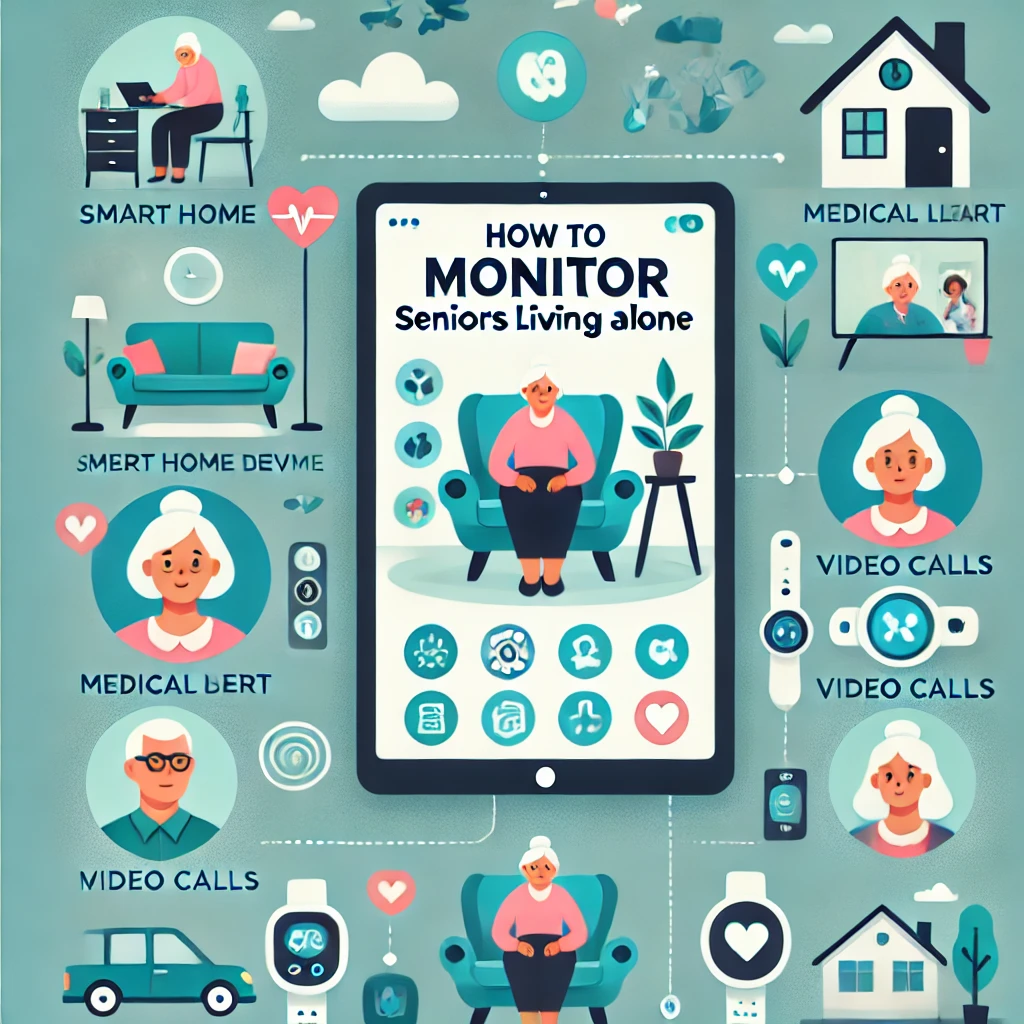This article explores how to monitor seniors living alone safely, covering technology, health tracking, communication tools, and in-person support. It explains the balance between independence and safety, signs that monitoring may be needed, and when families should consider alternative living options to protect health and quality of life.
Read: When to Move to Senior Living
Signs a Senior May Need Monitoring
Many older adults want to remain in their homes as long as possible. Living alone offers independence, familiarity, and comfort. But it also brings risks. Seniors who live by themselves face challenges such as falls, health emergencies, loneliness, and difficulty managing daily tasks. Families often worry about safety but do not want to take away independence.
This guide explains how to monitor seniors living alone in a respectful way, combining technology, community support, and family care to create a safe and balanced lifestyle.

Learn What Is a Senior Living Advisor
Why monitoring matters
Monitoring seniors living alone is important because risks increase with age. A simple fall can become life-threatening if help is not available quickly. Missed medications, poor nutrition, or isolation can lead to declining health.
Monitoring is not about limiting freedom. It is about ensuring safety while allowing seniors to continue enjoying independence.
Do You Know How Old Do You Have to Be for Senior Living?
Signs that monitoring may be needed
Families often begin monitoring when they notice warning signs. These can include frequent falls, forgetfulness, missed medications, changes in hygiene, unpaid bills, or spoiled food in the refrigerator. Seniors who withdraw from friends or show signs of depression may also need closer support.
Recognizing these signals early helps families act before a crisis occurs.
Explore What Are the Different Types of Senior Living Facilities
Technology for safety
Modern technology makes it easier to monitor seniors living alone without being intrusive.
Emergency response systems are wearable devices that allow seniors to call for help at the push of a button. Many include fall detection sensors that automatically alert emergency services if a fall is detected.
Smart home devices add another layer of safety. Motion sensors, door alarms, and stove shut-off systems reduce risks inside the home. Cameras can provide live video access, though families should discuss privacy before installing them.
Medication management tools, such as smart pill dispensers, remind seniors to take doses on time and notify caregivers if a dose is missed.
Explore Leo Carrillo Ranch Fame: From Stage and Screen to Cultural Legacy
Remote health monitoring
Health conditions such as heart disease, diabetes, or respiratory illness can be tracked with remote health technology. Devices like digital blood pressure cuffs, glucose monitors, and pulse oximeters connect to apps that share results with family members or doctors.
This type of monitoring helps detect problems early and reduces emergency hospital visits.
Communication tools
Regular communication is just as important as safety devices. Seniors living alone often feel isolated, which affects both mental and physical health.
Video calls, messaging apps, and voice-activated smart speakers allow easy check-ins with family. Seniors who struggle with technology may prefer simple devices with large buttons or pre-programmed contacts. Daily communication reassures both seniors and their families.
In-person support
Technology cannot replace human connection. Seniors living alone still need regular in-person visits. These visits may come from family, friends, or professional caregivers.
Neighbors can also play an important role by checking in and being aware of changes in behavior. Community centers, churches, and senior programs provide social interaction that reduces loneliness and strengthens safety nets.
Balancing independence and monitoring
One of the biggest challenges is respecting independence while ensuring safety. Seniors may resist monitoring because they fear losing freedom. Families must approach the conversation with sensitivity, emphasizing that monitoring is about protection, not control.
Involving seniors in choosing monitoring tools and schedules helps them feel empowered. Instead of imposing solutions, families should ask what feels comfortable and reassuring.
When living alone is no longer safe
Monitoring can reduce risks, but there may come a point when living alone is no longer safe. Seniors who experience frequent falls, wandering, severe memory loss, or medical emergencies may require assisted living or memory care.
Families should be prepared to reassess living arrangements if risks continue despite monitoring efforts. The goal is always safety, dignity, and quality of life.
Benefits of proper monitoring
When done well, monitoring seniors living alone provides peace of mind for everyone. Seniors gain security while keeping independence. Families feel reassured that help is available. Crises are reduced, and health outcomes improve.
Monitoring also preserves emotional well-being. Seniors can enjoy familiar surroundings, maintain routines, and feel supported rather than restricted.
Life beyond monitoring
Monitoring is one piece of the larger picture of senior wellness. Exercise, social activities, hobbies, and outdoor time all contribute to a fulfilling life. Places like Leo Carrillo Ranch show how open spaces and community events enrich daily living. Creating a balance between safety and joy helps seniors thrive while living alone.
Conclusion: Supporting Senior Living Alone Safely
Monitoring seniors living alone is about finding the right balance between independence and safety. Families can combine technology, health monitoring, communication, and in-person support to create a safe environment.
While tools like emergency response systems and smart devices provide protection, the most important element is human connection. Regular visits, conversations, and community engagement prevent isolation and keep seniors active.
At some point, monitoring may not be enough, and a transition to senior living may become necessary. But until then, the right approach to monitoring helps seniors live safely, confidently, and independently in the place they call home.
Go To Leo Carrillo Ranch